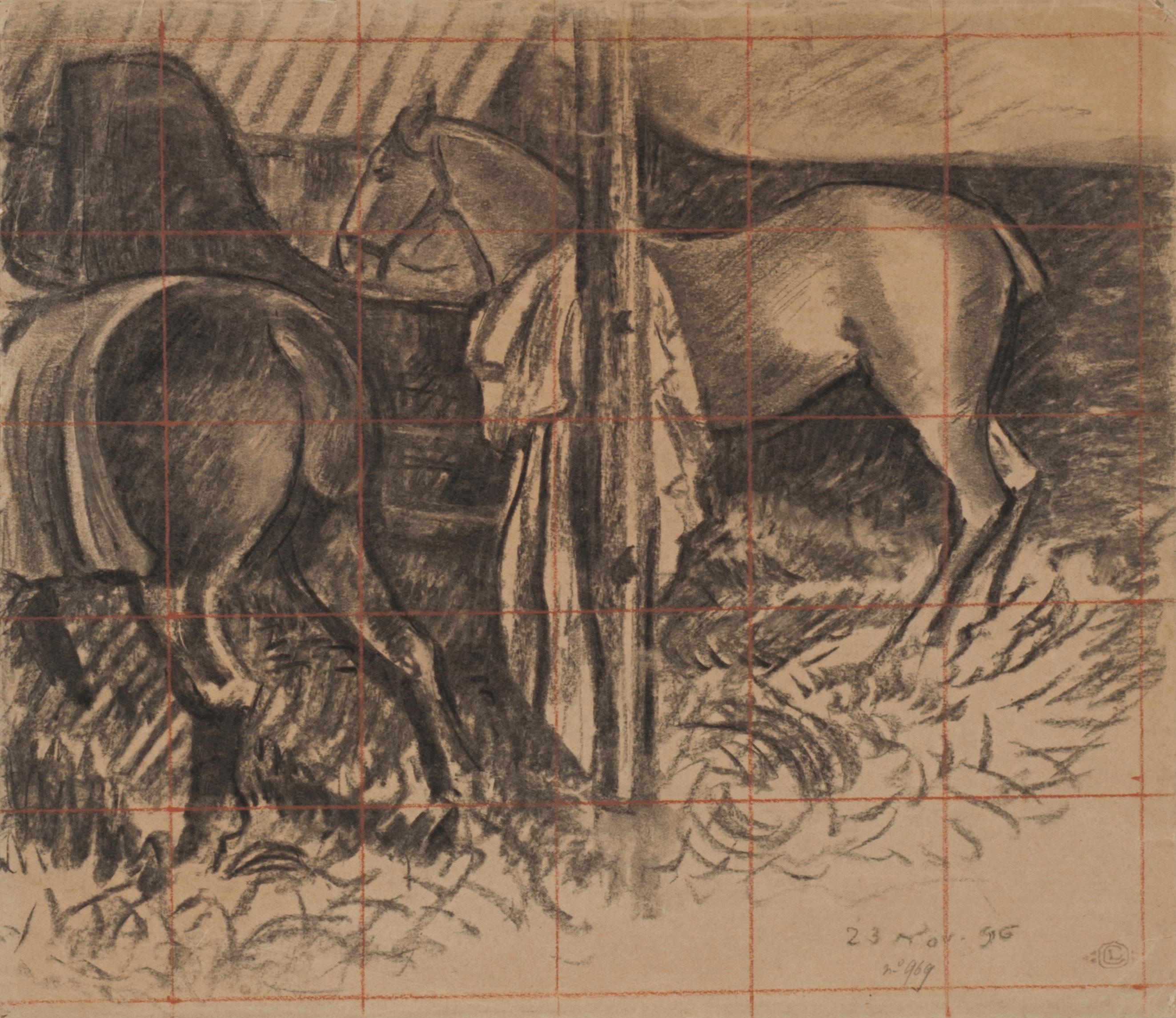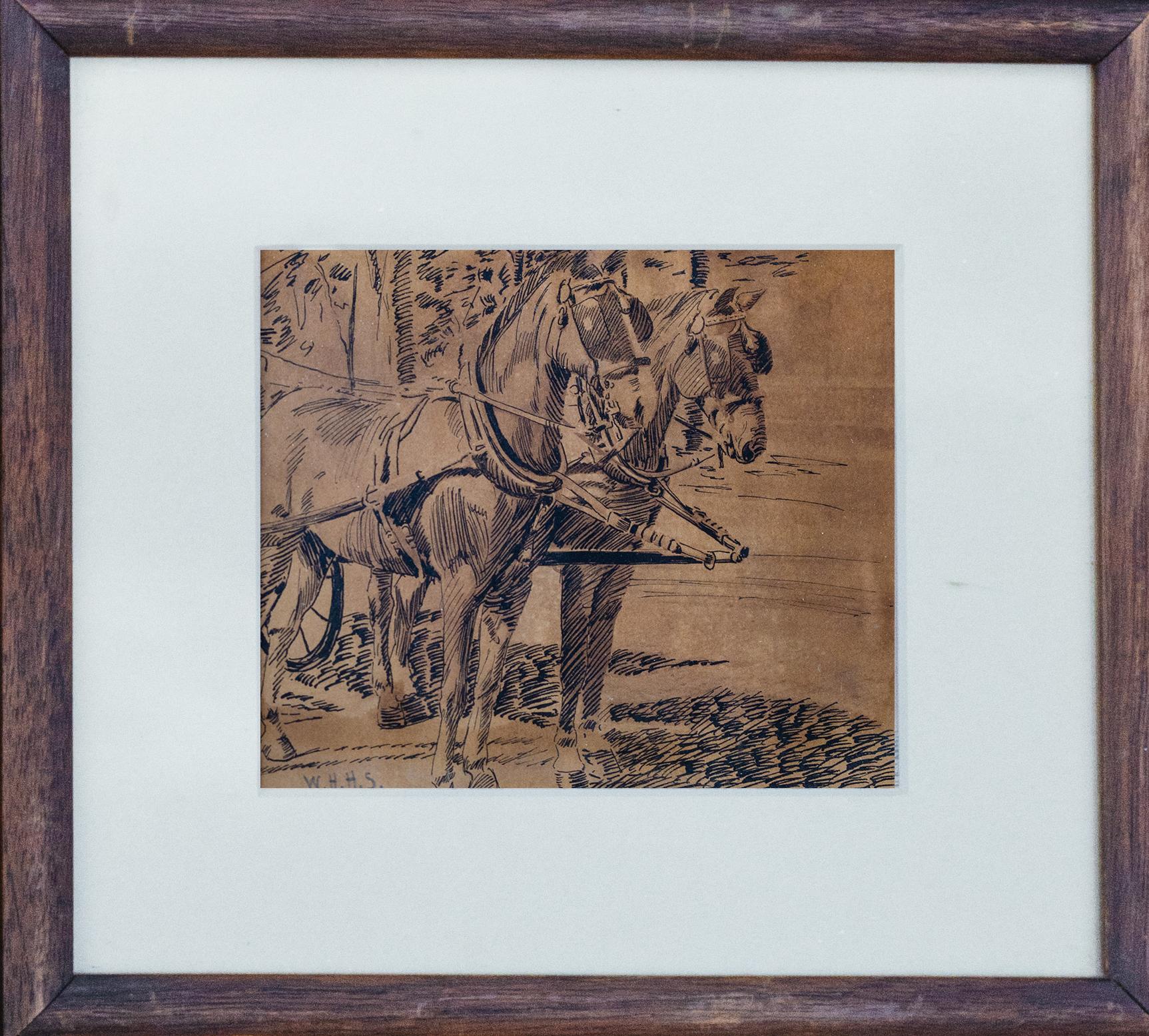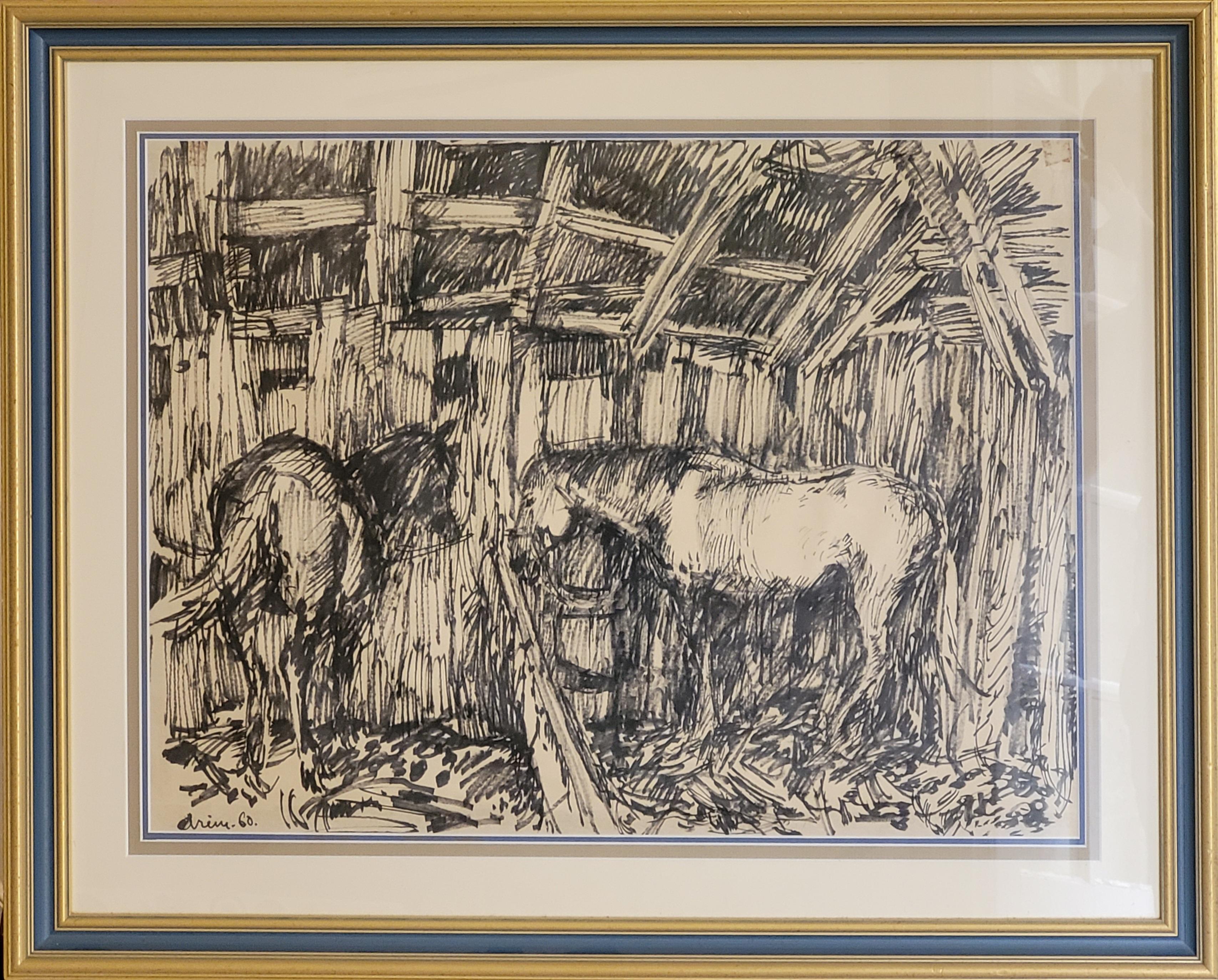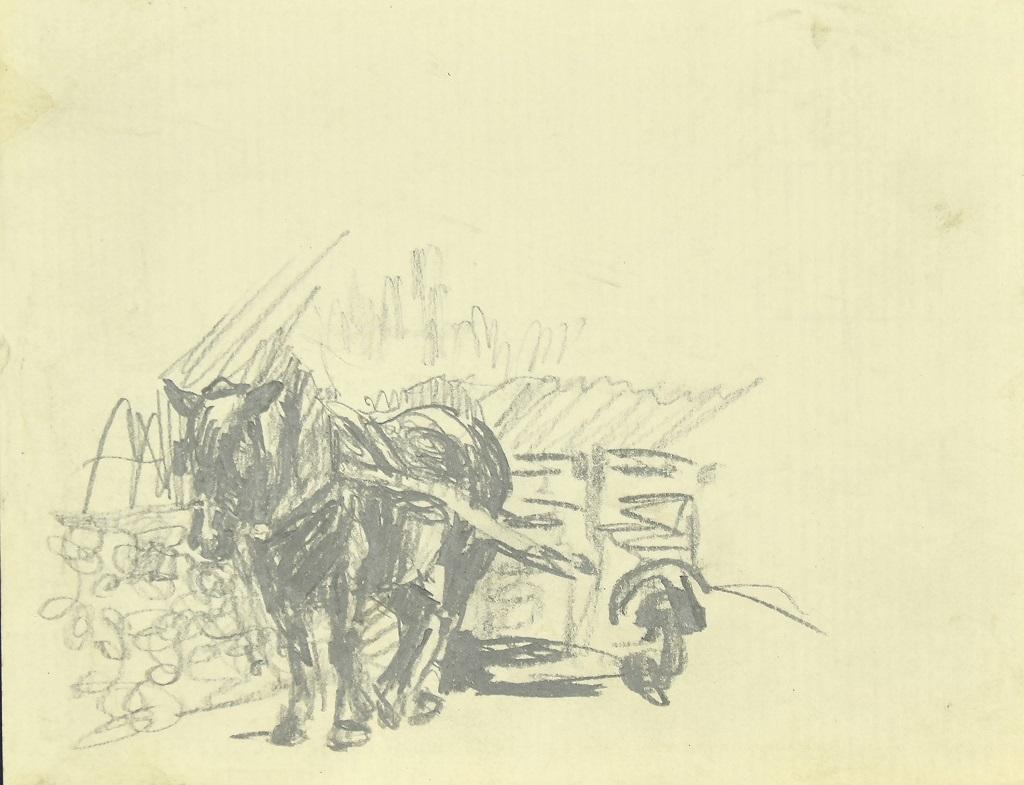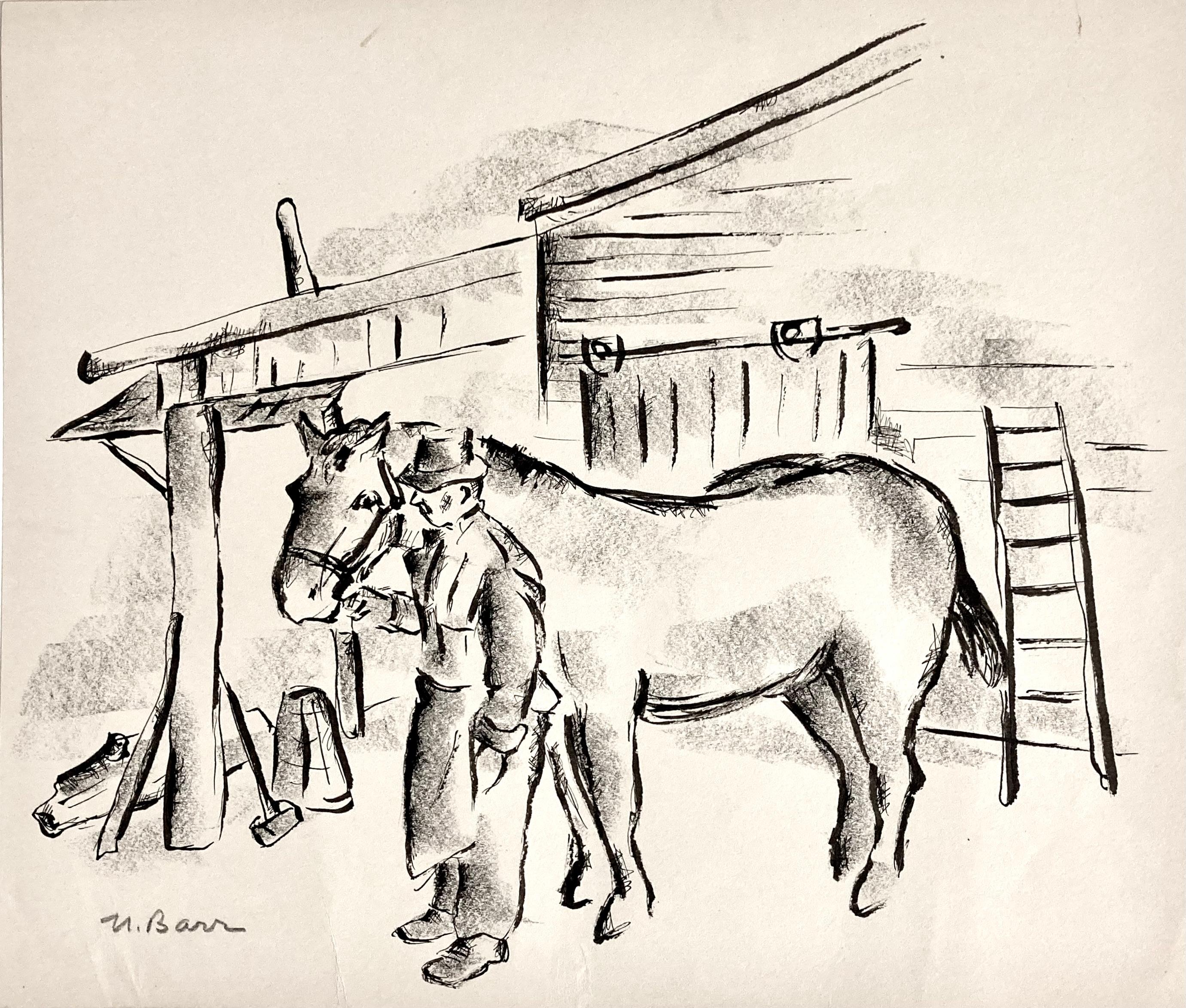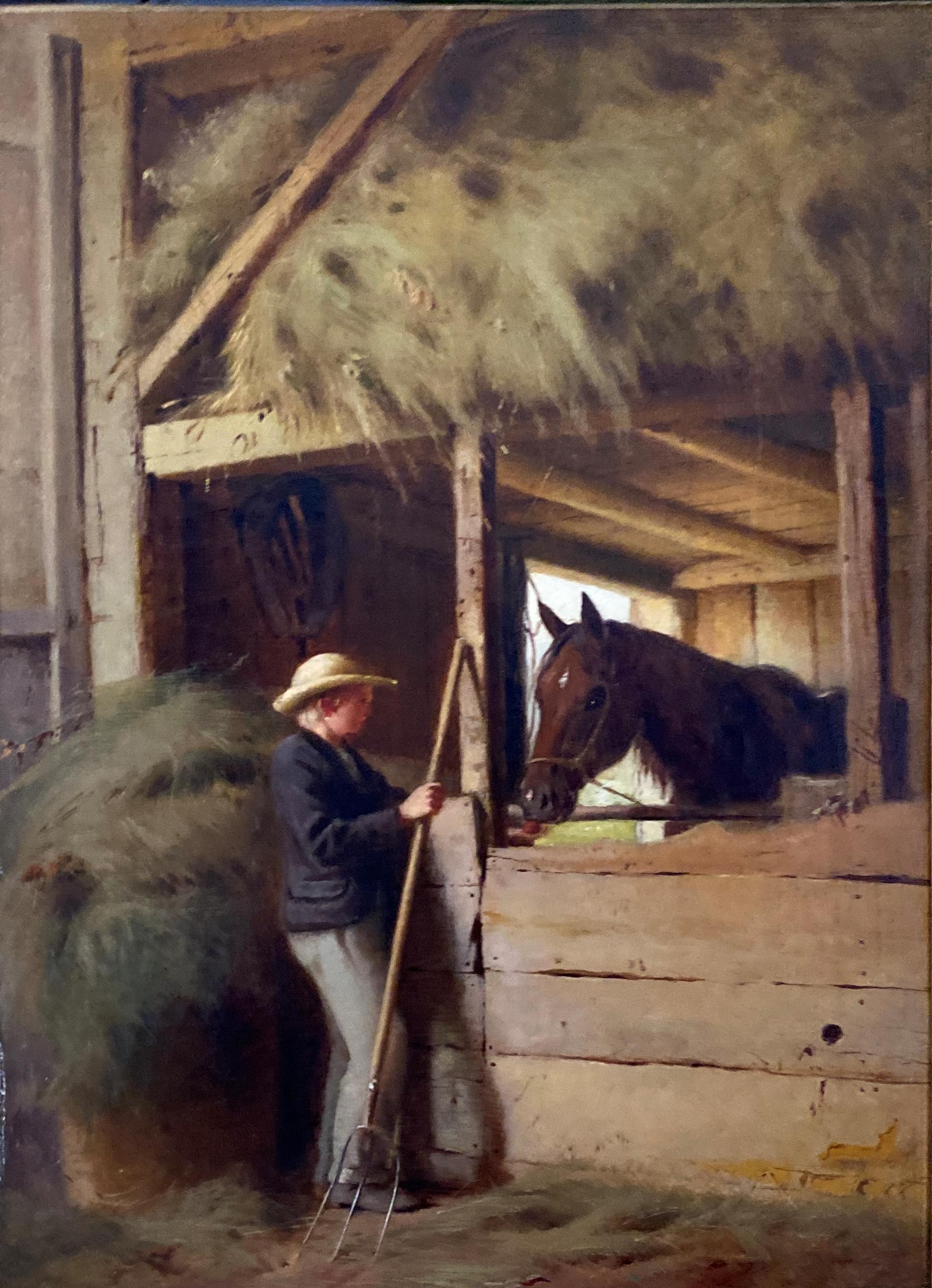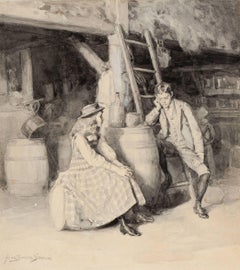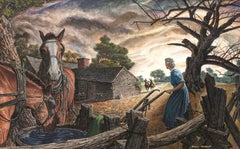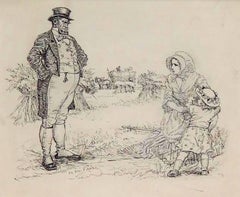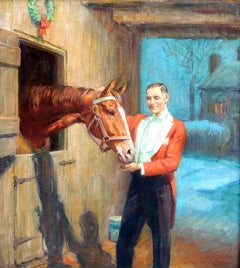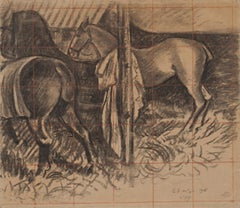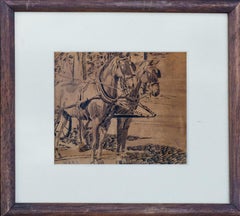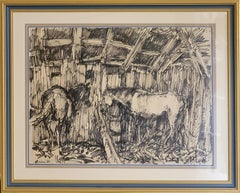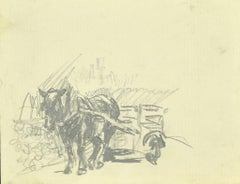Items Similar to Penrod and Sam with Rake and Horse in the Barn
Want more images or videos?
Request additional images or videos from the seller
1 of 3
Worth BrehmPenrod and Sam with Rake and Horse in the Barn1910
1910
$2,000
£1,529.11
€1,761.22
CA$2,802.61
A$3,128.85
CHF 1,639.47
MX$38,300.25
NOK 20,821.32
SEK 19,631.86
DKK 13,144.18
Shipping
Retrieving quote...The 1stDibs Promise:
Authenticity Guarantee,
Money-Back Guarantee,
24-Hour Cancellation
About the Item
Medium: Charcoal on Board
Signature: Signed Upper Left by the Artist
Contact for exact dimensions.
Published for the serialized Penrod and Sam stories in Cosmopolitan Magazine between 1910 and 1918.
- Creator:Worth Brehm (1883 - 1928, American)
- Creation Year:1910
- Dimensions:Height: 1 in (2.54 cm)Width: 1 in (2.54 cm)Depth: 1 in (2.54 cm)
- Medium:
- Period:
- Condition:
- Gallery Location:Fort Washington, PA
- Reference Number:Seller: 38481stDibs: LU38434368011
About the Seller
5.0
Recognized Seller
These prestigious sellers are industry leaders and represent the highest echelon for item quality and design.
Platinum Seller
Premium sellers with a 4.7+ rating and 24-hour response times
Established in 1995
1stDibs seller since 2016
128 sales on 1stDibs
Typical response time: 4 hours
- ShippingRetrieving quote...Shipping from: Fort Washington, PA
- Return Policy
Authenticity Guarantee
In the unlikely event there’s an issue with an item’s authenticity, contact us within 1 year for a full refund. DetailsMoney-Back Guarantee
If your item is not as described, is damaged in transit, or does not arrive, contact us within 7 days for a full refund. Details24-Hour Cancellation
You have a 24-hour grace period in which to reconsider your purchase, with no questions asked.Vetted Professional Sellers
Our world-class sellers must adhere to strict standards for service and quality, maintaining the integrity of our listings.Price-Match Guarantee
If you find that a seller listed the same item for a lower price elsewhere, we’ll match it.Trusted Global Delivery
Our best-in-class carrier network provides specialized shipping options worldwide, including custom delivery.More From This Seller
View AllAlphonse and Cherry in the Barn
By Alice Barber Stephens
Located in Fort Washington, PA
Date: 1891
Medium: Watercolor on Board
Dimensions: 13.50" x 12.00"
Signature: Signed Lower Left
Category
1890s Figurative Drawings and Watercolors
Materials
Board, Watercolor
A Woman and Horses Outside a Farmhouse
By Paul Rabut
Located in Fort Washington, PA
Signature: Signed Lower Right
Category
1960s Figurative Paintings
Materials
Watercolor, Gouache, Board
Dora & John Bull
By Norman Mills Price
Located in Fort Washington, PA
Medium: Drawing
Dimensions: 6.63" x 8.00"
Signature: Signed Lower Center
Category
Early 20th Century Figurative Drawings and Watercolors
Materials
Paint
Equestrian feeding a horse. Original holiday cover for The Sportsman magazine
Located in Fort Washington, PA
Original holiday cover for The Sportsman magazine, published December 1934. The image features an equestrian feeding a horse.
Medium: Oil on Canvas
Signature: Signed Lower Right
Category
1930s Figurative Paintings
Materials
Canvas, Oil
Penrod, Sam and Roddy Bits fighting for the “Horn of Fame”
By Worth Brehm
Located in Fort Washington, PA
Published for the serialized Penrod and Sam stories in Cosmopolitan Magazine between 1910 and 1918
Signed Upper Left by the Artist
Category
1910s Figurative Drawings and Watercolors
Materials
Charcoal, Board
Boy and Older Man with Cow, Original Illustration
By Henry Hintermeister
Located in Fort Washington, PA
The illustration features a young boy and older man with a cow and a dog.
Medium: Oil Paint
Signature: Signed Lower Right
Dimensions: 26.00" x 24.00"
As noted in Vintage Illustrati...
Category
Mid-20th Century Figurative Paintings
Materials
Oil
You May Also Like
Horses in Stable
By Georges Lemmen
Located in Fairlawn, OH
Horses in a Stable
Black chalk on tan wove paper, 1896
Signed with the estate stamp lower right corner
(see photo)
Note: The image has been sqaured off in red chalk grid lines for use in a large painting
Dated in charcoal lower right: "23 Nov '96"
Condition: Tack holes in the corners
small tears and creases along margins
Sheet size: 14 11/16 x 16 13/16 inches
Provenance: Dr. Ernst Hauswedell
Brenner Fine Arts, Inc., New York
Alan Stone Gallery, New York
"Georges Lemmen was the son of an architect and studied under Amédée Bourson at the academy in St Joost-ten-Node. He was invited in 1889 to join the Group of Twenty ( Cercle des XX) which had been launched in 1884 by Oscar Maus and had in the interim emerged as an influential force in Belgian artistic circles, not least by bringing to public and critical attention the work of such artists as Georges Seurat and Paul Signac. The Cercle des XX would be reborn in 1894 as La Libre Esthétique.
In the early days of the Cercle des XX, Lemmen espoused a pointilliste technique. His earlier painting was clearly influenced by the Neo-Impressionists; over time, however, his style became more subtle and nuanced – recalling, perhaps, that of his compatriot Van Rysselberghe, another Cercle des XX member. With the group’s rebirth as the Libre Esthétique, Lemmen’s work became more intimiste in character, most notably in his portraits, nudes and still-lifes, where the influence of Bonnard and Vuillard is unmistakable, as is that of Renoir, particularly after Lemmen’s travels in the Midi in 1911. From this point onwards, he would go on to make a major contribution to the renewal of the graphic and decorative arts in terms of his input to the new ‘free’ aesthetic and to Art Nouveau. Although his draughtsmanship retained its essential purity and elegance of line, his painting became more fleshy, imprecise and sensual, his compositions governed less by technical considerations than by the urgent need to express his emotions.
Between 1889 and 1893, Lemmen exhibited at the Salon des Indépendants in Paris, aligning himself with the Neo-Impressionists. In 1893, Henry van de Velde invited him to participate in the Pour l’Art association that had been created in Antwerp. He travelled to the south of France in 1911. By this juncture, he had already exhibited solo on two occasions (in 1906 and 1908) at the Galerie Druet in Paris. A further solo exhibition in 1913, his first in Brussels, cemented Lemmen’s reputation.
Museum and Gallery Holdings
Bremen (Kunsthalle): Standing Nude Combing her Hair
Brussels (Mus. royaux des Beaux-Arts de Belgique): Children’s Room (watercolour); Reading; Couture; Young Girl by the Sea...
Category
1890s Impressionist Animal Drawings and Watercolors
Materials
Chalk
American Ink Drawing of Two Work Horses
Located in New York, NY
Untitled (Two Workhorses), c. 20th Century
Ink on paper
Sight: 4 x 4 3/4 in.
Framed: 7 5/8 x 8 3/8 x 1/2 in.
Initialed lower left: W.H.H.S.
This ink drawing masterfully captures to ...
Category
20th Century American Realist Animal Drawings and Watercolors
Materials
Paper, Ink
Mid-Century French Feutre on Paper. In the Stables..
Located in Cotignac, FR
Mid Century French feutre drawing on paper of a Provençal stable with horses by Jean Arène. Signed and dated bottom left and presented in a wooden frame under glass.
This evocative...
Category
Mid-20th Century Expressionist Figurative Drawings and Watercolors
Materials
Paper, Felt Pen
Horse - Pencil Drawing - 1880s
Located in Roma, IT
Draft Horse is an original modern artwork realized in the second half of the XIX Century by a French Artist.
Original pencil drawing watermarked paper.
Mint conditions.
Draft Horse is an interesting drawing realized in the XIX Century in France; it depicts a genre scene, a draft horse with a small carriage...
Category
1880s Naturalistic Figurative Drawings and Watercolors
Materials
Pencil
Norman Barr, Farm, North Bronx (NYC)
By Norman Barr
Located in New York, NY
Norman Barr recorded his beloved New York City from the Bronx, to Coney Island, to the Fulton Fish Market.
In this period he was on the New Deal's Mural ...
Category
Mid-20th Century Ashcan School Animal Drawings and Watercolors
Materials
Crayon, India Ink
"Interior of a Stable" William Hart, Hudson River School Antique, Boy and Horse
By William Hart
Located in New York, NY
William M. Hart (1823 - 1894)
Interior of a Stable
Oil on canvas
17 x 12 inches
Provenance
William Macbeth Gallery, New York
Mrs. Mabel Brady Garvan Collection
Christie's New York, Sporting Art, November 28, 1995, Lot 116
Ann Carter Stonesifer, Maryland
Estate of above
Brunk Auctions, Asheville, North Carolina, January 27 2018, Lot 777
Exhibited
New York, The Metropolitan Museum of Art, Life in America, April 24 - October 29, 1939, no. 123, illustrated.
New York, Macbeth Gallery, 1892: Sixtieth Anniversary Exhibition, April 1952, p. 5, no. 18.
Literature
Turner Reuter Jr, Animal and Sporting Artists in America, Middleburg, Virginia, 2008, p. 306.
Gary Stiles, William Hart: Catalogue Raisonné and Artistic Biography, no. 1126, illustrated.
It should be noted that the Francis Patrick Garvan and Mrs. Mabel Brady Garvan collection, of which this painting was a part of, was one of the foremost American Art collections and now makes up a large part of the Smithsonian American Art Museum and the Yale University Art Gallery collections.
Born in 1823 in Paisley, Scotland, William Hart emigrated with his parents to the United States at the age of nine and settled in Albany, New York. It was here that Hart first began his artistic training when he was placed under the tutelage of Messrs, Eaton & Gilbert, the prestigious coach-makers from Troy, New York. During this time, Hart learned how to decorate coach panels, covering them with either landscapes or figurative compositions. At the age of seventeen, he was eagerly contemplating an artist’s profession. Consequently, he left the mechanical trade of coach-making and began expanding his artistic pursuits to more refined endeavors.
Hart followed coach-making with decorating window shades and later developed an interest in portraiture. Around 1840, he established his first formal studio in his father’s woodshed in Troy. There, he created many likenesses of individuals, affording him a nominal income. Once, he remarked that he felt prouder over his first fee of five dollars for painting a head then for the larger sums he would command later in his career. Nevertheless, his wages from portraits during this early period proved insufficient. Thus, he expanded into landscape painting, allowing him to barter his works or sell them for modest prices.
In 1842, Hart moved to Michigan in an attempt to further his success; portraiture remained his primary means of support. Unfortunately, his experiences in the West were disappointing. Hart spent three years living a rough existence until he finally returned to Albany in 1845. Upon his return, he fully devoted himself to the art of landscape painting. Despite his failing health, he worked diligently to perfect his skill until 1849 when he traveled abroad to his native land of Scotland. This trip was made possible through the generosity of his patron and advisor, Dr. Ormsby of Albany. For three years, he studied in the open-air, creating brilliant sketches of the Scottish Highlands and the surrounding British Isles.
Returning to Albany once more in 1852, Hart enjoyed improved health and was reinvigorated with purpose. The following year, he moved to New York and opened a studio, promoting himself as a specialist in landscape painting. Hart became a regular contributor to the National Academy of Design. His works received a great deal of attention from artists and connoisseurs alike, all of whom praised him for his fresh, self-taught style. In 1855, he was designated as an associate of the National Academy of Design; three years later he was elected to Academician. In 1865, he was unanimously chosen to be the first president of the Brooklyn Academy of Design. It was during his tenure there that he delivered his famous lecture The Field and Easel, which emphasized the distinguishing principles of landscape art in America. Hart argued that landscape painters should express the “look of the place” being depicted.Critics during the 1870s noted his sensitive balance between capturing a strict “real” interpretation of nature and that of a more “ideal” sentimental tone. For instance, in 1869, Putnam Magazine noted that Hart brought back “exquisite studies” of the surrounding Tappan...
Category
19th Century Hudson River School Animal Paintings
Materials
Canvas, Oil
$60,000 Sale Price
20% Off
More Ways To Browse
Antique Barn
Sam Brown
Horse Charcoal
Barn Watercolor
Charcoal Drawings Horses
Antique Barn Frames
1919 Charcoal
Used Horse Barn
Antique Rake
Beautiful Paintings
The Vintage Art Gallery
Famous Art
Vintage Lithograph Prints
Vintage Lithographs Prints
Oil On Canvas Landscape Painting
Black Beauty
Framed Acrylic Painting
Paris Art Print
